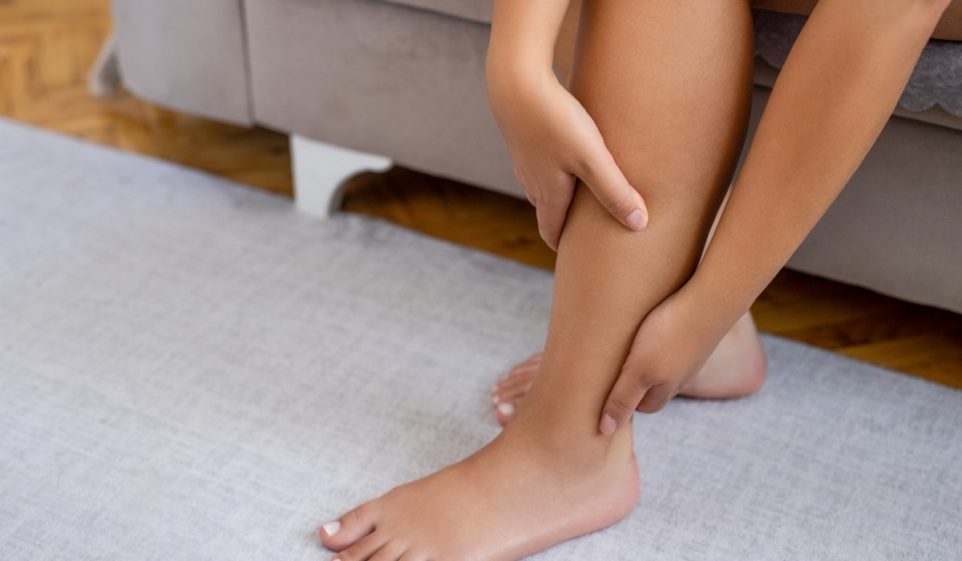Lifestyle Upgrades To Help Relieve Swollen Feet and Ankles

For those of us who suffer from swollen feet and ankles, it can be a real challenge to find a comfortable sleeping position. We toss and turn in vain, trying to find something, anything, that will help alleviate the pain and discomfort. Unfortunately, nothing seems to work.
If you’re suffering from swollen feet and ankles, then this post is for you. We’ll provide you with three-bedroom upgrades that can help alleviate your swollen feet and ankles and get you some restful sleep. These tips include an ergonomic mattress topper, an adjustable bed, and a leg rest. Read on to learn more about these products and how they can help you get a better night’s rest.
What Causes Swollen Feet and Ankles?
The most common cause of swollen feet and ankles is fluid buildup. This occurs when there’s an increase in pressure in the capillaries that causes them to leak fluid into the surrounding tissues.
Fluid retention is usually brought on by heat, standing or sitting for long periods of time, injury to the area, or hormonal changes during pregnancy or PMS. Other factors which can contribute to swollen feet and ankles include an unhealthy diet, dehydration, certain medications, and even obesity.
How To Relieve Swollen Feet and Ankles
There are several simple steps that you can take to help relieve some of the discomfort associated with swollen feet and ankles. These steps include:
Elevating your legs above the level of your heart and head: This helps reduce pressure on the capillaries and improves circulation. Leg elevation pillows are also very helpful in providing comfortable elevation while sleeping.
Get some exercise: Moving your feet around regularly helps improve circulation and reduce the stiffness from swelling. Gentle, low-impact exercises such as walking are especially helpful for those dealing with swollen feet and ankles.
Try some compression socks: These speciality socks work to improve circulation by putting gentle pressure on the feet and ankles. Just be sure to talk to your doctor before using compression socks if you are pregnant or have a circulatory disorder.
Eat well: Eating foods rich in antioxidants helps reduce inflammation in the body, reducing fluid buildup around the feet and ankles. Foods such as blueberries, spinach, nuts, avocados, garlic, and kale can all help reduce inflammation naturally.
Drink plenty of water: Staying hydrated is key when it comes to reducing swelling in the feet and ankles. Drinking lots of water also helps flush out toxins in the body, which can contribute to inflammation.
Home Upgrades To Relieve Swelling
For those dealing with frequent swollen feet and ankles due to long-term illnesses or other chronic conditions, there are some simple upgrades that you can make around your home in order to provide additional relief:
Adjustable Beds: An adjustable bed allows you to elevate your feet above your head level while sleeping to reduce pressure on the capillaries. Some adjustable beds even come with leg elevation pillows that also provide comfortable elevation throughout the night.
Recliners: Recliners are great for those who need additional support while they sit upright or recline. They elevate the legs above heart level to reduce pressure on the capillaries. Try to choose one with lumbar support that will help keep your spine aligned while providing additional comfort when elevating your legs.
Standing Desks: Standing desks provide an adjustable height option that allows you to stand or work at an elevated height throughout the day without having to sit down for extended periods of time (which can contribute to swelling). A standing desk also encourages good posture and helps reduce back pain from prolonged sitting.
Medical Treatments for Swollen Feet and Ankles
Medical Treatments for Reducing Swelling
In cases where home remedies or lifestyle adjustments aren’t enough, there are medical treatments available that can help reduce swelling in the feet and ankles. These treatments include:
Diuretics: Diuretics are medications that work by reducing fluid retention in the body, thus reducing swelling around the affected areas (such as the feet and ankles). Your doctor may recommend diuretics if other lifestyle adjustments fail to produce results; just be sure to discuss this with them before starting any new medication.
Surgery: In severe cases, your doctor may recommend surgery if other treatments have been unsuccessful in reducing swelling around the feet and ankles or if an underlying medical condition is causing the swelling. Your doctor will be able to provide more information about whether this option is right for you, depending on your individual needs.
Physical or Massage Therapy: These two treatments can work together to reduce swelling around affected areas. Physical therapy helps promote circulation by stretching out tight muscles, while massage therapy helps reduce inflammation by gently releasing the tightness out fascia tissue, which can restrict circulation throughout your body.
Conclusion
Swollen feet and ankles can be painful and frustrating, but thankfully there are several options available that can help alleviate some of these symptoms naturally at home or through medical treatments depending on your needs. Understanding what causes swollen feet and ankles is key when it comes to finding relief. This is why it’s so important to speak with your doctor before making any drastic alterations to your lifestyle or daily habits. We hope you get the relief you’re looking for soon!
Decades of Combined Expertise
Best Buy Guidebook is a culmination of online publishing lessons learned. From SEO to paid ads, our team has experienced the highest of highs and the lowest of lows. Our goal now is simple: Arm readers with the most information possible.
